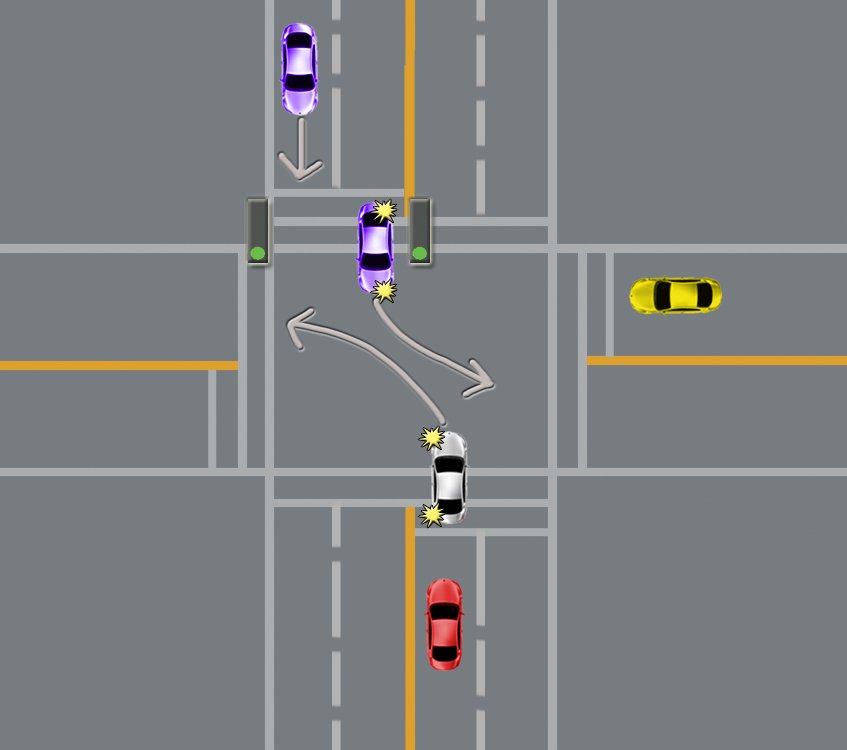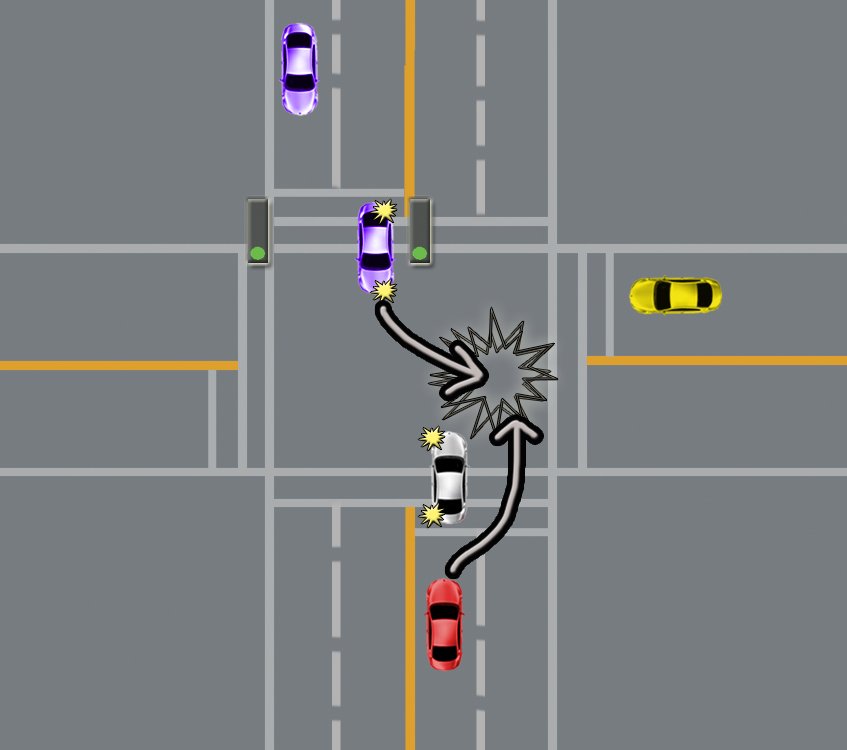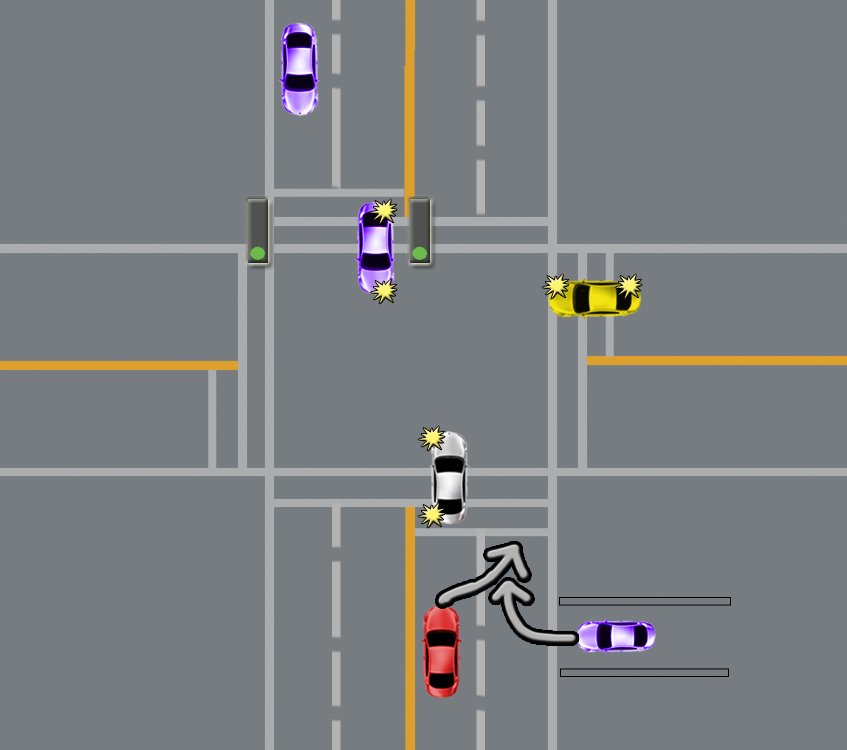Today we are answering another question. It’s about changing lanes in an intersection. And why it’s a bad idea. Preparing for your ICBC road test? Be sure to check out my epic article: ICBC Road Test Tips For Classes 5 & 7 [Instructor Gets Deep].
Question: Is changing lanes in an intersection illegal in beautiful British Columbia?
There is no law that says you can’t lane change inside an intersection
This is a common question among drivers. There is no law that says you can’t lane change inside an intersection. But, this doesn’t mean it’s a good idea.
Changing lanes in – or near – an intersection is potentially dangerous. It should generally be avoided as a matter of good habit. And it’s part of being a defensive driver. Check out our full article on how to be a great defensive driver and avoid collisions.
If you take a look at the common intersection, you will often find a solid white line near the approach of the intersection (it’s illegal to cross solid white lines). This is to discourage lane changing near them. And since it’s good to know why here are a few reasons why. Read more about the road lines on our blog.
Why is changing lanes in an intersection bad?
Let us consider just one of the many possible scenarios.
Say the red car is driving along and not leaving an adequate following distance of 2-3 seconds. The car in front decides – at the last minute – to turn on the left turn signal and turn left.
This leaves the average impatient driver checking his mirror to see if he can go around to avoid waiting for the car in front to turn left.
If they had had more following distance and kept track of other vehicles around theirs constantly, as well as maintained space around their vehicle, they may have been able to change lanes well before the intersection. Before getting ‘stuck’ in this situation.
Changing lanes in an intersection: oncoming left-turning vehicle

Maybe the most common risk would be the oncoming left-turning vehicle. Perhaps when that driver does not anticipate the red car suddenly ‘appearing’ at the intersection. This is after the driver already mistakenly ascertained that it was safe to turn left.
Or, a conflict with this left-turning car as the light turns yellow, and it is trying to exit the intersection. This a reminder to all drivers that when turning left, if you don’t have good visibility, then do not turn. It’s so very simple.
If you are only 99% sure that it is safe, then you should still not turn. Wait until either you can see, or until the light changes to yellow or red and you are 120% sure it is safe.
The oncoming left-turning driver can not see you
More on changing lanes in an intersection

The red car could have a problem with the yellow car and decides to turn right at the red light. From the yellow car’s point of view, the right lane is free and clear. It seems a perfectly acceptable time to turn right, doesn’t it?
The right-turning driver does not anticipate you

Changing lanes in an intersection – the parked car driver does not anticipate you
The red car could even have a potential conflict with a parked vehicle that decides it’s a good time to pull away from the curb. Why would they pick that time? Maybe to drive down the road towards the inviting and ever-alluring green light.
A car could also ‘appear’ out of a driveway, lane, or parking lot that lines up perfectly with the blind spot of the red car just as it is about to lane change.

I could go on about this but I think the basic concept can be understood.
The recurring problem that leads to collisions here is 2 cars trying to enter the same space at the same time. And, drivers who do not anticipate the actions – or the mere existence – of others.
There can be a lot going on in an intersection. And for these reasons, it is highly recommended not to change lanes anywhere near an intersection.
Also, thinking from the point of view of others can go a long way to keep you safe. Where do the other drivers think you’re going to go? If you were that other driver, what would you be thinking? Wow, this is getting deep.
Whenever there is poor visibility, always assume there is probably traffic where you can not see. Don’t assume there is probably nothing there, as that is a great way to get into trouble.
Conclusion
Changing lanes in an intersection isn’t illegal in British Columbia. However, it doesn’t bother me that people think it is. Driving instructors everywhere teach students never to change lanes in an intersection unless they find themselves in some kind of strange ‘situation’ in which you think you really should.
Intersections close to your home are the number #1 most common place where crashes happen. The #2 most common is parking lots. It’s not a wise idea to change lanes before, in, or near intersections for multiple reasons. Cars are moving things and drivers are constantly trying to anticipate one another.
Changing lanes in an intersection is simply not necessary. You can plan your route and your actions well ahead of time so that you don’t need to change lanes in an intersection, ever. It’s just safest to avoid this.
Reference: Rules of the Road, ICBC



